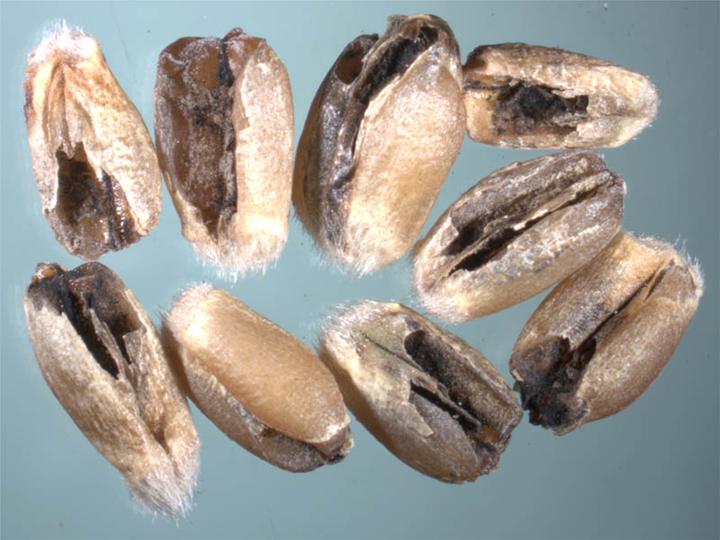Symptoms
Wheat grains develop dark discolourations at the pedicel or ‘embryo’ end of the grain. The discolouration progresses along the grain until it is entirely discoloured. The infection is difficult to detect on the plant. Infected grain has a distinct rotten fishy smell. Grain discolouration may be caused by other fungi, so samples should be sent to a laboratory for diagnosis.
Organism
Tilletia indica
Host range
Triticum spp., including Triticum aestivum (Wheat) and Triticale.
Method of spread
Survives in grain, soil and cereal trash. Seed-borne, soil-borne and wind-borne.
Conditions favouring disease
The spores require free water in the soil to germinate. Air temperature ranging from 10°C minimum to 26°C maximum, with high humidity above 75 per cent relative humidity during heading and flowering are required for infection.
Confused with?
Other bunts and smuts, however, a distinctive feature of Karnal bunt is only part of the head is affected whereas common bunt affects the entire grain head.
Other fungi may cause grain discolouration and so expert diagnosis is often required. Symptoms on the grain may be confused with Black point, a fungal disease common after wet conditions at harvest.
Where?
First detected in India and now found in many Middle-Eastern countries. Confined to specific areas and under quarantine in specific areas of South America, South Africa and the USA. If Karnal bunt became established in Australia, access to over 45 markets would be significantly reduced.

Image 20. Grain seed infection.
Source: Simon Hinkley & Ken Walker, Museum Victoria.


